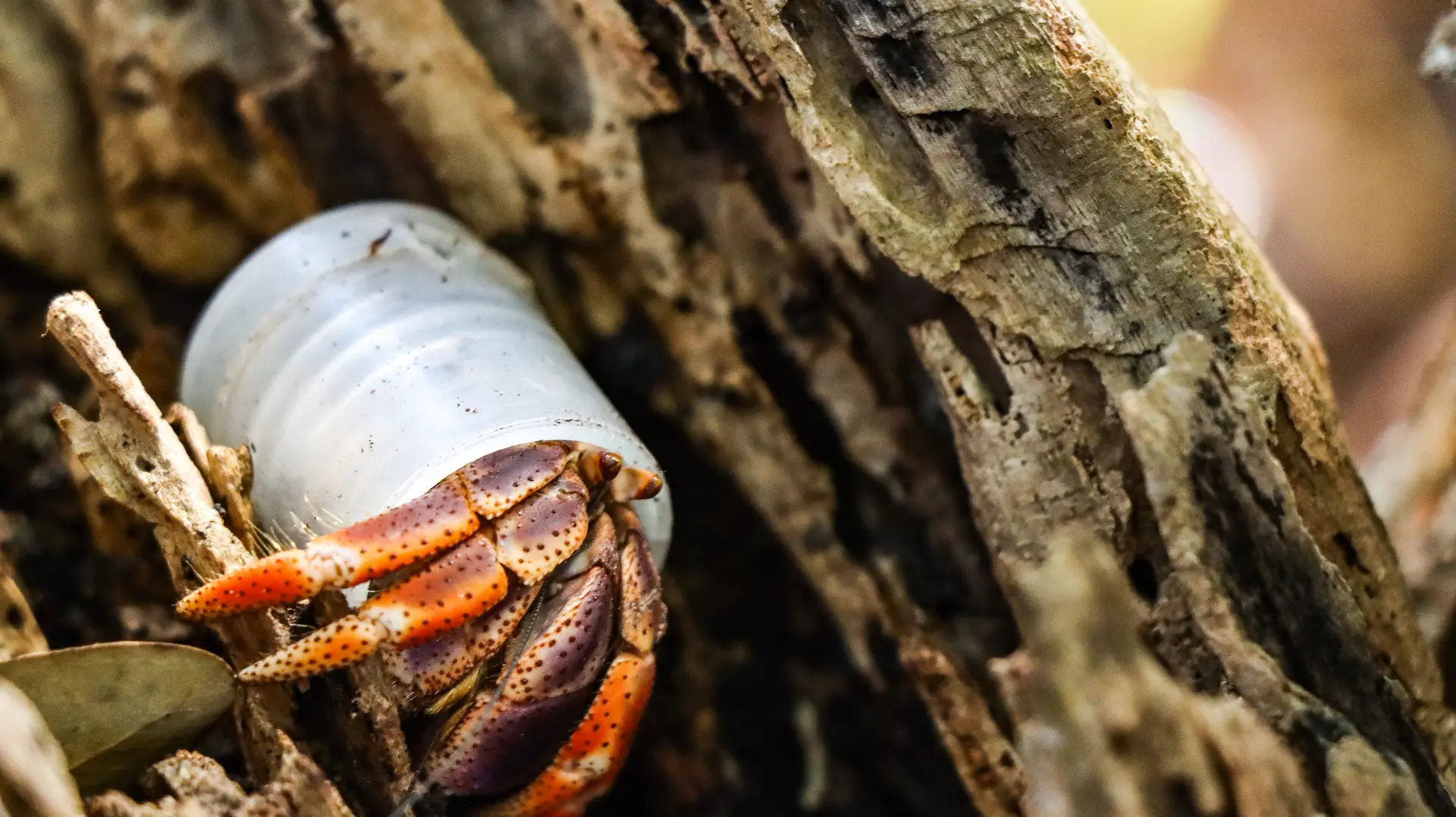Huzzah for Hermit Crabs
Learning more about aquatic and land hermit crabs

Today, we at Ocean Conservancy dive into the ever-changing world of hermit crabs. They are well-known for their ability to change shells, as they grow or as they find one that suits them better. There are two types of hermit crabs: land and aquatic. Land hermit crabs spend most of their lives on land and rarely submerge in the water. Aquatic hermit crabs spend most of their lives in the water and rarely leave for land.
Hermit crabs are crustaceans—a group of animals that have a hard shell (exoskeleton), ten jointed legs and a symmetrical segmented body. They have two compound eyes and two pairs of antennae (one pair for feeling and sensing vibrations and one pair for tasting and smelling). There are more than 1,000 species of hermit crabs, and most are native to tropical climates like the Caribbean, South America, Africa and Australia. Some hermit crabs can also be found living along the Atlantic coast of the United States.
Get Ocean Updates in Your Inbox
Sign up with your email and never miss an update.
Hermit crabs are omnivores, animals that eat plants and meat. They forage for worms, plankton, algae, dead fish and whatever else they can find in the sand. Like most scavengers, hermit crabs play an important role by cleaning up their natural ecosystems.
Huzzah! They’re Not Really Hermits at All
When you think of the word “hermit,” you most likely picture someone who enjoys a solitary life without interactions with others, but the life or a hermit crab couldn’t be further from that description! Contrary to their name, hermit crabs live very social lives. They live in big groups, travel together and even meet up to search for food and shells. Perhaps, these animals should be renamed Huzzah Crabs!
When it’s time to upgrade shells, they work together as a team. The hermit crabs gather in a line from the biggest to the smallest crab. Then, the hermit crabs use a cascading effect to quickly transition out of their shells, give their shells to their smaller neighbors and accept a bigger shell from a larger neighbor, passing shells along until everyone is safe and secure in a new home. It’s fascinating.
But, not everything is sunshine and rainbows. Sometimes hermit crabs are known to violently steal a shell from another hermit crab.
A Shell Game
Hermit crabs are very resourceful. They have exoskeletons like other crustaceans but rely on other animals’ shells for additional support. A hermit crab without a shell is a rare sighting; they have a soft, spiraled abdomen that fits perfectly into shells. Every time the hermit crab molts (or sheds its exoskeleton to grow), it must find a new, bigger shell.
Using Litter for Shells
Hermit crabs are examples of why we need to continue working to keep the ocean healthy. There are instances where hermit crabs have used alternatives to shells such as tin cans, bottles or other trash. Oftentimes, they can become trapped in trash and die. This sets off a deadly chain reaction, because when they die, they emit a scent that tells other hermit crabs in the area that their shells are available for use. These crabs will follow that scent just to become entrapped and perish with the first hermit crab. A research expedition to two remote islands found half-a-million hermit crabs had been killed by being trapped in trash.
How YOU Can Help
From plankton to whales, animals throughout the ocean are finding their homes polluted by plastics. Millions of volunteers from more than 173 countries have picked up 384 million pieces of trash since the start of Ocean Conservancy’s International Coastal Cleanup® in 1985, all the while recording what they find and helping inform research and legislation across the world. Every bottle, every straw, every piece of trash you clean up can lead to a cleaner, healthier ocean.
No matter where you are, you can help ocean creatures enjoy a trash-free home. Ready to #SeatheChange? Find out how you can join Ocean Conservancy’s International Coastal Cleanup.